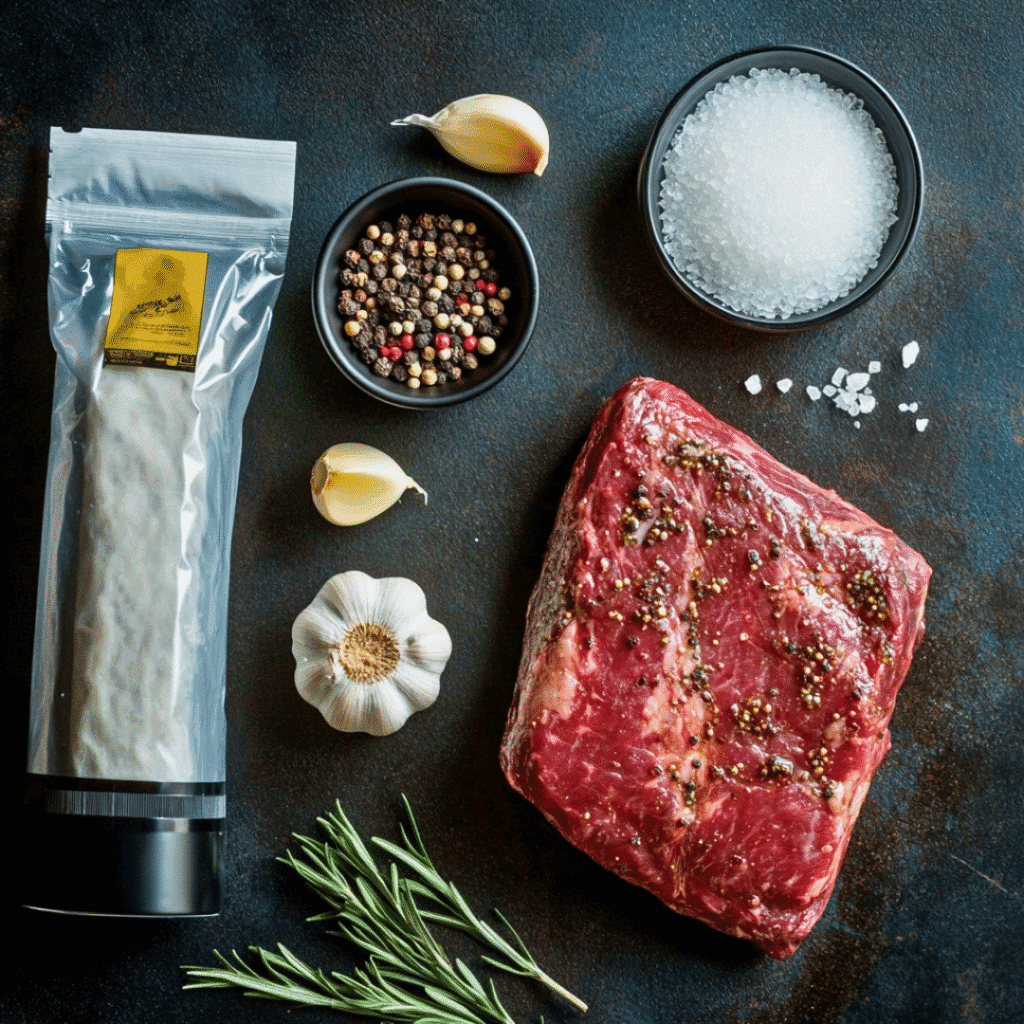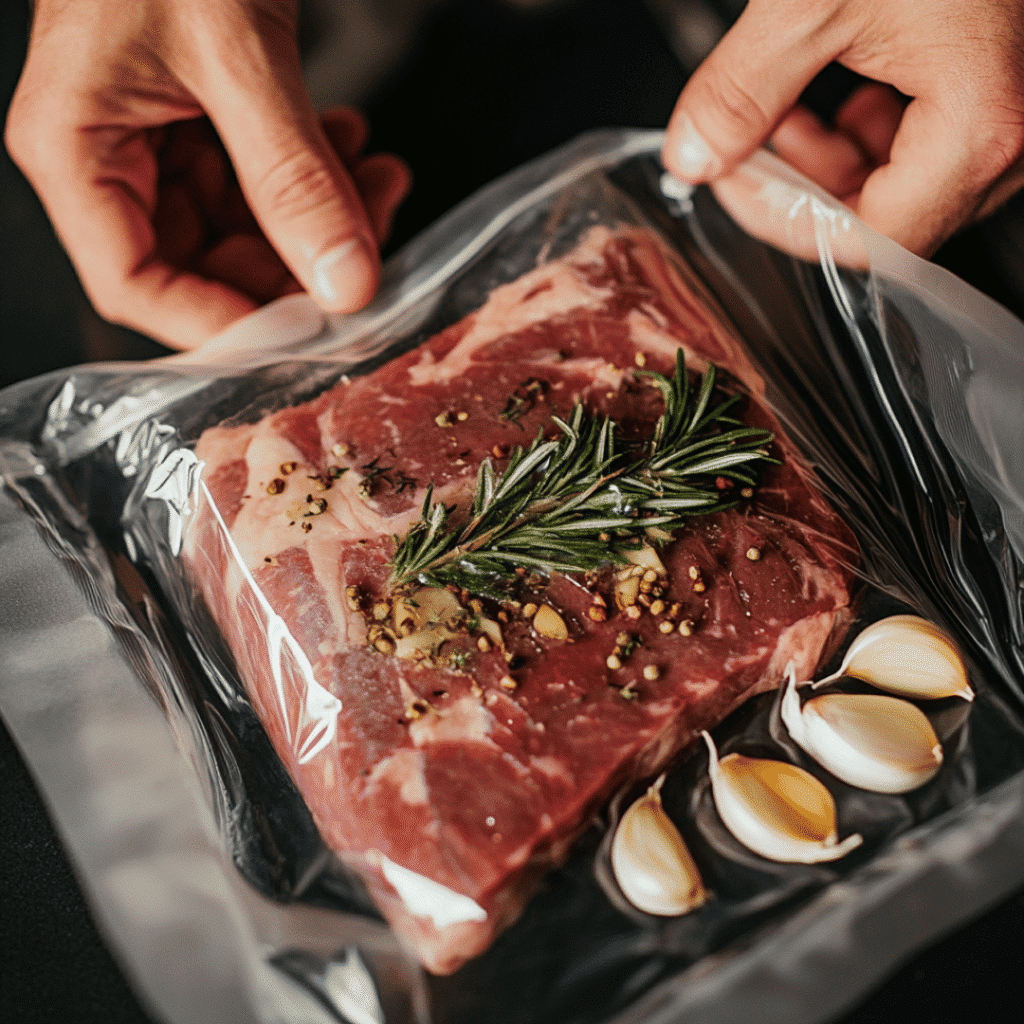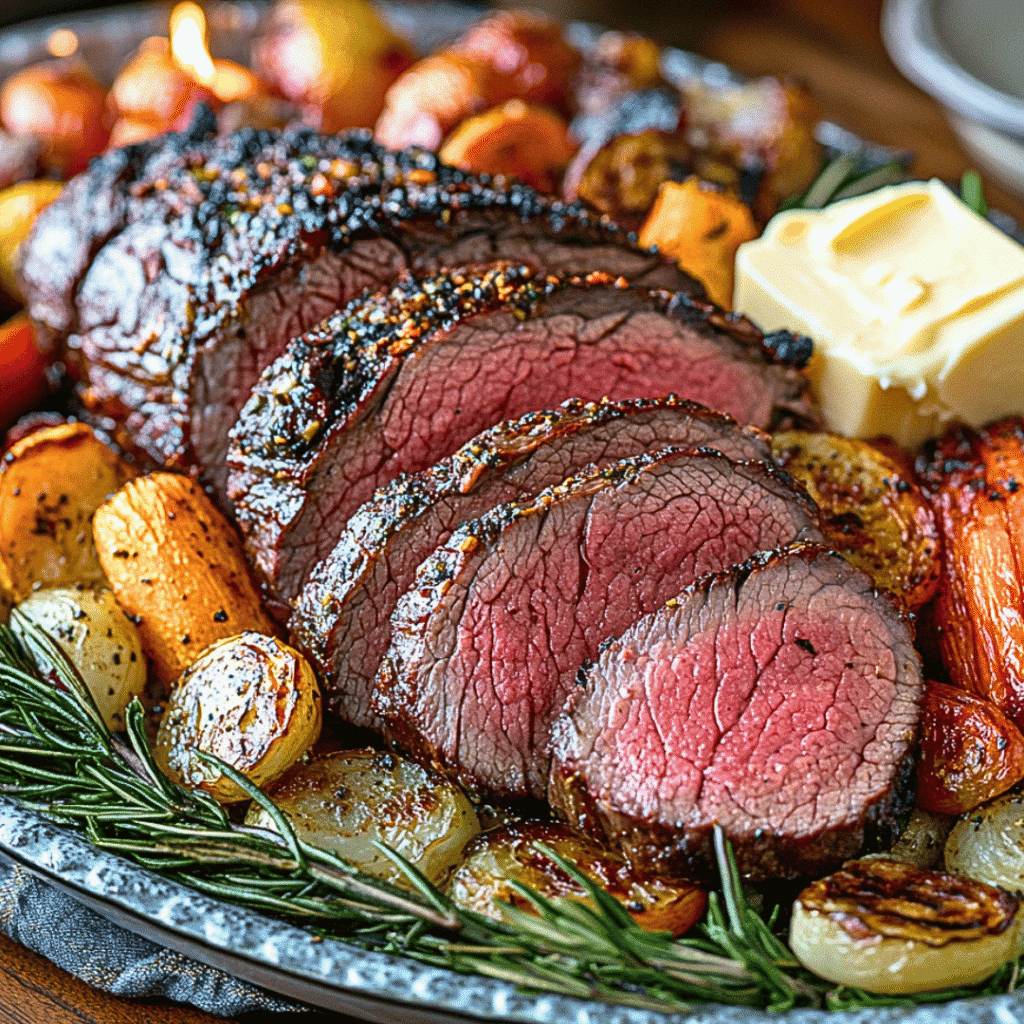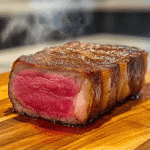Sous Vide Tri Tip Recipe: Perfectly Tender and Juicy Every Time
If you’ve ever bitten into a slice of tri tip and wondered how to keep that deep beefy flavor with buttery tenderness, you’re in for a treat. This article walks you through exactly how to prepare sous vide tri tip like a seasoned pro. We’ll dive into time, temperature, prep tips, and searing secrets so you can get that steakhouse crust with zero guesswork. I’ll share my personal journey with tri tip—from dry roasts to juicy perfection—and break down each step so it’s easy and doable for any home cook.
A Chicago Kid’s First Tri Tip and Why Sous Vide Changed Everything
The first tri tip disaster and what went wrong
Hey there—I’m Enzo, and if there’s one thing I’ve learned over the years, it’s that a little patience and a perfectly heated water bath can work absolute miracles in the kitchen. I still remember my first experience with tri tip. I was maybe fifteen, standing in my parents’ deli, watching my dad pull a big hunk of beef from the oven. It smelled incredible. But when we sliced into it? Dry. Chewy. Needed gravy just to get it down. That was my intro to tri tip—and for years, I avoided it.
Fast forward a decade, and I was knee-deep in experimenting with sous vide. I’d already nailed a sous vide ribeye steak, then moved on to sous vide filet mignon for date nights. One weekend, I spotted a tri tip roast at the butcher, and something told me it was time to revisit the past. I seasoned it, sealed it, and dropped it in a 131°F bath for six hours.
Game. Changer.

That first bite was a total revelation. Tender like a filet, with the flavor of a rib roast. No guesswork. No chewing forever. Just steakhouse results right at home. Since then, sous vide tri tip has become a regular in my kitchen—and once you try it, I’m betting it’ll be a staple in yours too.
Why tri tip benefits so much from sous vide
Tri tip’s an underrated cut. It’s lean in parts, fatty in others, and it’s got two different grain directions. That means it’s easy to mess up using traditional roasting or grilling methods. One section gets perfect while the other turns into leather. But when you cook sous vide tri tip, everything changes. You control the temp down to the degree, so it cooks evenly from edge to edge. No dry ends. No pink center with gray borders.
The sous vide method gives the connective tissue enough time to break down, making the meat incredibly juicy without being mushy. It’s why I always recommend this method over oven-roasting or pan-searing alone. You get precision, repeatability, and that deep beefy payoff every single time.
If you’ve been burned by tough roasts in the past, trust me—sous vide tri tip will rewrite your steak story.
Up next: We’ll dive into exact temps, times, and a chart so you can get your tri tip perfect every time. You can also check out my sous vide flank steak for another lean-but-flavorful option.
Perfect Timing and Temperature for Sous Vide Tri Tip
Ideal time/temp chart for perfect doneness

Once you’re hooked on sous vide tri tip, the next step is precision. The beauty of sous vide is that you never have to guess if your steak is undercooked, overcooked, or drying out while you’re juggling other dishes. You just set the temp, drop in the bag, and walk away.
For tri tip, I’ve tested everything from rare to medium-well—and trust me, medium-rare is where it shines. You want it tender, pink, and juicy with a bit of chew—not mushy or stringy.
Use this quick reference table when dialing in your sous vide tri tip recipe:
| Doneness | Temperature | Cook Time |
|---|---|---|
| Rare | 129°F / 54°C | 2–4 hours |
| Medium-Rare (Best) | 131°F / 55°C | 6 hours |
| Medium | 135°F / 57°C | 4–6 hours |
| Medium-Well | 140°F / 60°C | 4–5 hours |
I personally lock in at 131°F for 6 hours—it gives you a tender, uniform texture that slices like a dream and eats like a fine cut of prime rib.
Looking for another flavorful, lean cut that handles sous vide well? Check out my salt beef sous vide technique—perfect for sandwiches and sliced deli-style roasts.
Can you sous vide tri tip from frozen?
Yes—and here’s the kicker: it’s just as delicious. If you vacuum-sealed your tri tip before freezing (which I always recommend), you can drop it straight into the bath from frozen. Just add one extra hour to your usual cook time. So if your go-to is 6 hours at 131°F, set it for 7 hours and go relax.
The sous vide method brings the meat up to temp gradually, so you don’t risk overcooking or drying it out. And since tri tip is a thicker cut, that extra hour helps bring it to even doneness all the way through.
Need ideas on how to handle frozen proteins with flavor? My sous vide chicken thighs stay just as juicy even when cooked from frozen. It’s the beauty of sous vide—set it and forget it.
Searing Secrets & Finishing Tips
When to sear and why it matters
Let’s get one thing clear: if you skip the sear, you’re missing half the flavor. A sous vide tri tip without a crust is like a burger without a bun—edible, but nowhere near complete.
You should always sear after sous vide, never before. Why? Because the long, low temp water bath would just erase any crust you built beforehand. Post-sous vide searing, though, gives you full control over the Maillard reaction—the browning that makes steak smell and taste irresistible.
Here’s how to do it right:
- Remove the tri tip from the bag and pat it bone-dry with paper towels. Moisture = steam, not sear.
- Preheat a cast iron pan or grill until it’s ripping hot.
- Add a high smoke point fat (like avocado oil or clarified butter).
- Sear each side for 45–60 seconds, pressing slightly to ensure full contact.
If you want to go wild, baste it with rosemary, garlic, and butter in the pan like you would with a sous vide filet mignon. It’s not required—but it does turn a great tri tip into a phenomenal one.
Reverse sear vs torch vs grill finish
Each finishing method gives you a different result. Use what fits your tools and flavor goals:
- Cast Iron Sear: Classic. Deep crust, easy control. Great if you’re after that steakhouse vibe.
- Grill Finish: Perfect for summer nights. Charcoal gives extra smokiness, but go hot and fast—tri tip’s already cooked through.
- Torch Finish: Fast and flashy. I like it for last-minute crust, but use a clean-burning torch. Butane can leave off flavors.
Whatever your style, remember this: you’re not cooking anymore. You’re adding flavor. Think of it as painting the edges of a masterpiece.
Looking for another technique that bends the rules? Check out how I turn heads with my dishwasher sous vide steak. Yep, it’s a thing—and it works.

Serving, Storage & Leftover Wins for Sous Vide Tri Tip
How to slice and serve sous vide tri tip the right way
You’ve nailed the cook, crushed the sear—now don’t mess up the slice. The way you cut your sous vide tri tip directly impacts tenderness.
Here’s the rule: always slice against the grain. The catch? Tri tip has two different grain patterns. Start by slicing from the thicker end, then rotate the cut once you reach the grain change at the tip. Cut into thin slices—about ¼ inch—to maximize that buttery tenderness sous vide gives you.
Serve it fresh off the board, maybe with a spoonful of cowboy butter or a simple chimichurri. Or plate it with roasted potatoes, grilled veggies, or even on top of arugula for a high-protein salad.
For something bolder, pair it with sous vide deviled eggs or go all in on a steak platter.
Whether you’re feeding four or fifteen, sous vide tri tip gives you steakhouse results with zero stress.
Leftover magic: How to use and store sous vide tri tip
The only thing better than tri tip fresh off the pan is having it ready in your fridge the next day.
Here’s how to store your sous vide tri tip:
- Fridge: Up to 4 days, tightly wrapped or vacuum sealed
- Freezer: Up to 2 months if vacuum sealed immediately after cooling
To reheat without drying it out? Just pop it back in your sous vide bath at 130°F for 30–45 minutes. You won’t lose moisture, texture, or flavor.
Now let’s talk leftovers:
- Tri Tip Sandwiches – Pile it high on ciabatta with horseradish mayo
- Tacos – Sear, chop, and add avocado salsa
- Eggs & Steak – Serve over breakfast hash or alongside sous vide turkey breast
With sous vide tri tip, you’re not just getting one meal—you’re prepping two or three without any extra effort. And every time you slice into that perfectly pink center, you’ll be reminded why this is one of the smartest cuts to sous vide.
Still curious about more low-effort, high-reward beef options? Take a look at my sous vide flank steak—a lean cousin of tri tip with tons of flavor.
FAQ Section
How long should you sous vide a tri tip steak?
For best results, sous vide tri tip at 131°F for 6 hours. This gives you a medium-rare finish with perfect tenderness and a juicy bite.
Should you sear tri tip before or after sous vide?
Always sear tri tip after sous vide. The low and slow cooking builds tenderness, and searing at the end locks in flavor with a delicious crust.
What temperature is best for sous vide tri tip for medium rare?
131°F (55°C) is ideal for medium-rare sous vide tri tip. It’s hot enough to break down connective tissue while preserving a rich pink center.
Can you sous vide a frozen tri tip directly?
Yes! Sous vide cooking from frozen works great. Just add an extra hour to your total cook time and follow your usual temperature guide.
Sous Vide Tri Tip Is the Steakhouse Secret You’ll Always Come Back To
If there’s one steak I return to again and again, it’s sous vide tri tip. It’s affordable, flavorful, and with the right time and temp, it rivals cuts twice the price. Whether you’re feeding your family on a weekend or hosting your foodie friends, this method makes tri tip foolproof and unforgettable.
The best part? Once you understand the fundamentals of sous vide cooking, you can apply it to nearly any protein. Want to level up even more? Dive into guides like Serious Eats’ breakdown of sous vide steak or explore advanced cooking temps via Sous Vide Everything—their reverse sear strategies are worth learning.
Table of Contents

Sous Vide Tri Tip Recipe
- Total Time: 6 hours 10 min
- Yield: 4 servings 1x
- Diet: Gluten Free
Description
Tender and juicy sous vide tri tip with a perfect crust, ideal for steak night or Sunday dinners
Ingredients
1 2.5–3 lb tri tip roast
1 tbsp kosher salt
1 tsp cracked black pepper
2 cloves garlic, smashed
2 sprigs rosemary
1 tbsp avocado oil (for searing)
Instructions
Season tri tip with salt, pepper, garlic, and rosemary.
Vacuum seal or place in zip bag using water displacement method.
Sous vide at 131°F for 6 hours.
Remove and pat dry completely.
Heat a cast iron skillet until smoking hot.
Sear tri tip 45–60 seconds per side with oil.
Slice against the grain and serve immediately
Notes
For frozen tri tip, add 1 extra hour to cook time.nTry topping with cowboy butter or chimichurri
- Prep Time: 10 minutes
- Cook Time: 6 hours
- Category: Main Course
- Method: sous vide
- Cuisine: American








